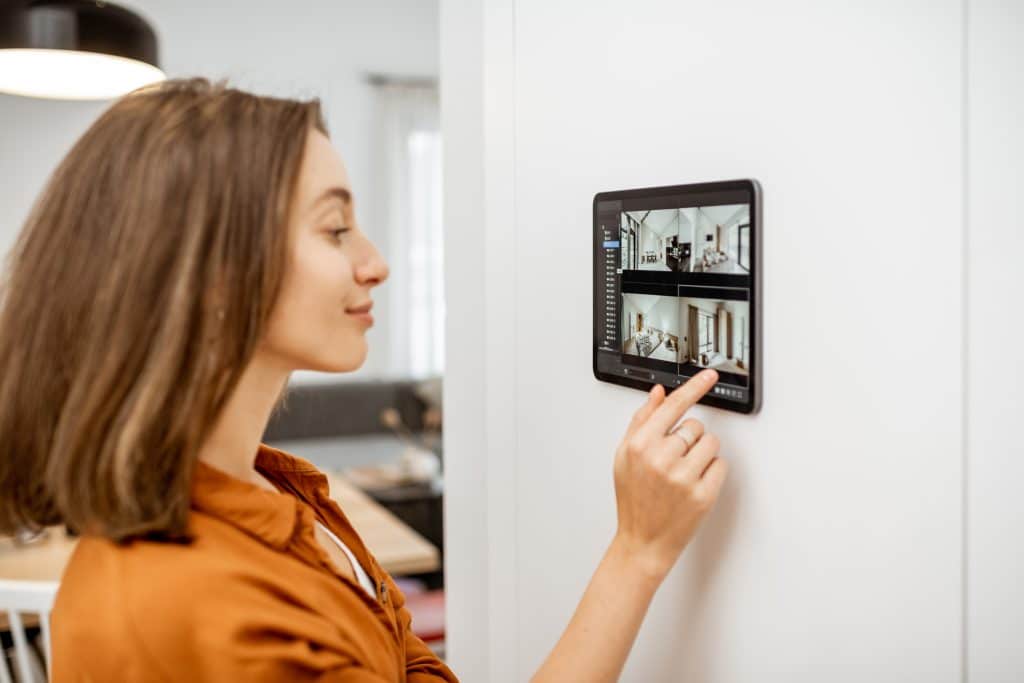Smart home market embracing edge biometrics for improved security and privacy
Smart home systems, equipped with biometric recognition capabilities, are generating a substantial amount of data through their IoT devices, typically processed in the cloud. However, cloud computing systems sometimes struggle to meet critical low latency requirements due to the large volume of data handled by smart IoT systems.
Particularly in cases where biometric data undergo further processing, there are significant concerns over data privacy. In the field of smart connected homes, safeguarding security and privacy is paramount, as unauthorized access to biometric data can lead to identity theft and other serious consequences.
To address these challenges, edge computing technologies like new smart cameras from Xailient and Hualai are emerging as promising advancements, offering a way to mitigate security and privacy concerns. Edge computing inherently provides better security compared to cloud technology, as it ensures that private and sensitive information from devices like cameras or microphones does not leave the home premises without consent.
By processing data at its point of origin, edge computing minimizes the risk of data breaches during transmission. This is especially important for connected devices that historically have lacked robust built-in security features.
Xailient and Hualai develop privacy-preserving smart cameras
Xailient, a company specializing in AI solutions for computer vision applications, has formed a strategic partnership with Hualai Technology, a manufacturer of smart cameras. They have collaborated to enhance biometric security and ensure a privacy-safe environment with the smart camera system.
As part of their partnership, Xailient brings its privacy-compliant computer vision software, which includes object detection and facial recognition, and is being integrated into Hualai’s smart cameras. These cameras are not only equipped with advanced edge artificial intelligence capabilities but also compatible with AWS cloud solutions.
“Hualai’s partnership with Xailient will enable Privacy Complaint AI automation for smart camera designs capable of driving the ultimate experience of services,” says Foresto Zhang, general manager of Hualai Global Enterprise Product and its service solution business unit, “together, we provide more robust, more cost-effective, and more scalable smart camera solutions with a quick time to market.”
In response to growing concerns around privacy and regulatory compliance, embedded manufacturers and software companies are intensifying their focus on these aspects to remain competitive. The co-developed smart camera solution will reduce the entry barriers for new, regulation-compliant smart products, the company says.
Specifically, this solution ensures privacy and data security of smart cameras by implementing edge processing, where data is processed locally, reducing the risk associated with data transmission. Additionally security measures include encryption for data security, user consent protocols, and strict adherence to privacy policies. According to Xailient, the smart camera solution allows users to control data collection, specifying when and for what purposes their data is used.
Edge security for smart homes
While edge computing is generally considered more secure due to its capability to process data at the point of generation, thereby eliminating the need for data transmission for rapid responses, it’s not without its vulnerabilities. The multitude of smart home devices within a single household can create numerous potential entry points for security breaches.
It’s crucial that these devices are equipped with edge security solutions tailored for edge devices, which may sometimes operate with intermittent connectivity. In the context of smart home devices, we often expect robust wireless connectivity. This assumption facilitates the use of advanced security solutions using machine learning algorithms to address zero-day vulnerabilities effectively.
Despite the growing popularity of cloud-native security systems, with Secure Access Service Edge (SASE) at the forefront, they face challenges like bandwidth limitations, latency issues, and data sovereignty concerns. These issues can leave the smart home edge infrastructure exposed to increasingly sophisticated cyberattacks. Therefore, there’s a need for an edge-native security solution that enables smart home devices to operate autonomously and independently, ensuring the continuous operations of these products.
What’s next?
For smart cameras and other smart home devices, securing biometric data within their hosting infrastructure is key. Companies can achieve this by implementing AI-driven, software-defined security systems, which are highly effective in protecting against attacks and safeguarding the privacy of user biometric information.
The efforts from industry to build privacy-centric smart security cameras could establish new benchmarks, potentially shaping the development of future smart home devices, especially in terms of privacy and cost-efficiency. This move is indicative of an emerging trend where hardware is integrated with advanced AI software, catering to consumer market needs in home security and automation.







